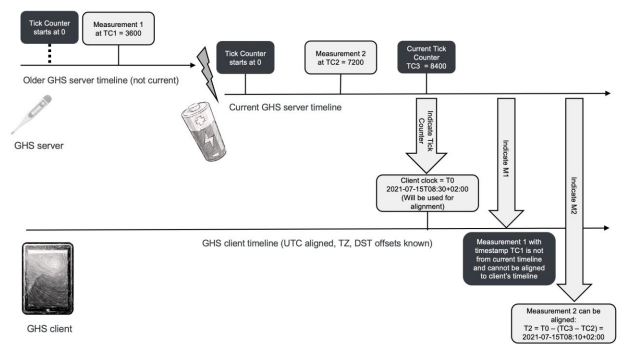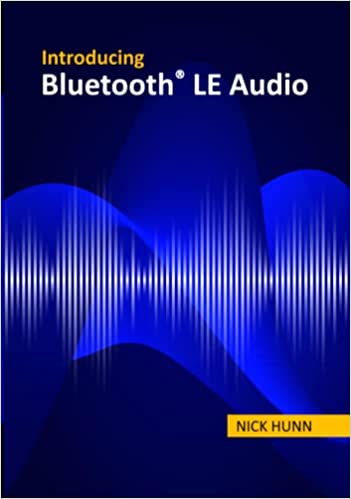An Introduction to Bluetooth LE Audio

Over the past two decades, since its inception, Bluetooth® technology has become the go-to solution for the vast majority of wireless audio streaming applications. If you’ve ever listened to music wirelessly through a headset or through your car’s infotainment system, then you’ve most likely used Bluetooth technology.
Bluetooth Classic (BR/EDR) has been the main radio used in current wireless audio applications, and it has been satisfactory for most applications. Originally, the BR/EDR audio profiles only supported voice calls (mono audio). Over time, with the gaining popularity of personal listening, the Bluetooth Special Interest Group (SIG) released a new set of standards around the Advanced Audio Distribution Profile (A2DP) which added support for stereo streaming and a higher quality audio codec.
Bluetooth developers have stretched the current Bluetooth audio standard to its limit. Currently, developers sometimes resort to adding proprietary extensions to the technology to deliver compelling user experiences. Additionally, with the evolving requirements of personal audio devices, such as hearing aids and true wireless (TWS) earbuds and the increased demand for streaming high-quality audio/video, a new Bluetooth audio standard became necessary. Some of these new requirements include:
- Lower power consumption
- Smaller devices requiring smaller-sized batteries
- True wireless operation with individual streams sent to each earbud
- A new standardized Bluetooth implementation that addresses the limitations of the current BR/EDR standard and the Low Complexity Sub-band Codec (SBC)
- The need for broadcast capability and support for Auracast™ broadcast audio
- A unified standard for both hearing aids and consumer audio
- Lower latency requirements
The introduction of the next generation of Bluetooth® audio, Bluetooth LE Audio, which was announced in early 2020, set forth to define a new approach or architecture to satisfy these requirements and enable the next 20 years of wireless audio innovation.
Bluetooth LE Audio allows developers to build the same types of products as Classic Audio (using BR/EDR) but introduces four key new features that focus on improved performance as well as support for new innovations. The four key features are:
- Introduction of a new more efficient and higher quality audio codec called Low Complexity Communications Codec (LC3) which replaces SBC (Sub-band Codec).
- Support for multi-stream and true wireless (TWS) earbud applications by supporting independent left and right audio streams which are also highly synchronized.
- Support for the development of standardized Bluetooth hearing aids, enabling true global interoperability.
- Support for broadcast audio. Bluetooth LE Audio will continue to support point-to-point communication and also add a new broadcast audio capability (support for unlimited number of synchronized audio sinks). This includes support for public or private broadcasts, introducing an entirely new use case for Bluetooth audio.
Audio Codecs
The role of an audio codec is to compress the audio stream at the source in preparation for transmission and then decompress it at the receiving end for playback.
There are three important parameters that are determined by a codec:
- Sample Rate (Hz): This refers to the number of samples taken per unit of time. It captures the signal amplitude at a specific point of time. It is also referred to as the sample frequency. The higher the sample rate, the closer the compressed stream is to the original stream but the larger the resulting audio file size ends up being. Keep in mind that according to the Nyquist Sampling theorem, the sampling frequency to produce the exact original waveform should be double the original frequency of the signal.
- Bit Depth (bits): This refers to the number of bits of information in each sample. Common bit-depth values include 16-bit, 24-bit, and 32-bit.
- Bit Rate (kbps): This refers to the number of bits encoded per second and correlates to the audio quality of the stream. It is measured in kilobits per second. The higher the bit rate the higher quality of the stream. Good quality music has a bit rate of 96 kbps or greater.
The bit rate for an uncompressed audio stream is calculated by multiplying the sampling rate by the bit depth by the number of channels encoded (e.g. left and right audio channels):
bit rate (uncompressed stream) = sampling rate × bit depth × no. of channels
Low Complexity Communications Codec (LC3)
LC3 is an efficient Bluetooth® audio codec for use in Bluetooth LE Audio profiles. It is capable of encoding speech and music at various bitrates and can be incorporated in any Bluetooth audio profile. To increase the audio quality, it is strongly recommended to implement PLC (Packet Loss Concealment) at receiving ends of audio connections. The role of PLC is to conceal the effect of unavailable or corrupted frame data for decoding (an example of PLC is provided in the LC3 codec specification).

Some of the technical properties of LC3 include:
- It is a block-based transform audio codec
- It provides a wide range of usable bitrates
- It supports a frame interval of 10 ms and 7.5 ms
- It supports the following bit depths: 16, 24, and 32 bits per audio sample
- It supports an unlimited number of audio channels
- It supports the following sampling rates: 8 kHz, 16 kHz, 24 kHz, 32 kHz, 44.1 kHz, and 48 kHz
The new LC3 provides higher quality at the same rates as SBC, or even better quality at a much lower data rate.
Providing high quality even at low data rates, LC3 will bring tremendous flexibility to developers, allowing them to make better design tradeoffs between key product attributes, such as audio quality and power consumption.
There are different ways to judge the quality of a codec. The most common way is live listening comparison for people to listen and compare the audio after it has been compressed and decompressed. Other ways include standard quantitative methods for measuring performance of audio codecs, such as the one shown in the graph below that compares the performance of LC3 to SBC.
A few notes about the above graph:
- The X-axis represents various bitrates for each SBC and LC3
- The Y-axis represents a grading scale (0 – 5) as defined in ITU-R BS.1116-3 (PDF), which presents Methods for the subjective assessment of small impairments in audio systems
- Per the document, the grading scale is defined in the table below:
| Impairment | Grade |
| Imperceptible | 5.0 |
| Perceptible, but not annoying | 4.0 |
| Slightly annoying | 3.0 |
| Annoying | 2.0 |
| Very annoying | 1.0 |
- If you look at the 345-kbps bit rate for example, you’ll see that SBC scores a value just above 4.0, whereas LC3 scores an even higher amount with less than half the bit rate (160 kbps)
Here at the Bluetooth SIG, we have recently published an interactive listening demo that enables listeners to actually hear the difference between LC3 and SBC, as well as specific bitrates for each. The demo was developed in collaboration with our friends at T2 Labs.
The release of LC3 represents the completion of the second of the three key building blocks. The Bluetooth SIG member community is currently hard at work developing new profile specifications that define interoperable support for existing and new audio products and use cases, including hearing aids and Auracast™ broadcast audio.
As we’ve learned in this article, the new Bluetooth LE Audio standard, including LC3, marks a very exciting and important milestone in the development of the Bluetooth® technology standard, one that will enable the advancement and innovations in wireless audio for years to come!
The full LC3 specification can be downloaded at the following link: https://www.bluetooth.com/specifications/le-audio/
![]()
INTRODUCING
Bluetooth Audio Codec Demonstration
A key component of Bluetooth® LE Audio is now available. LC3 is a new low-power audio codec that provides high quality even at low data rates.


























